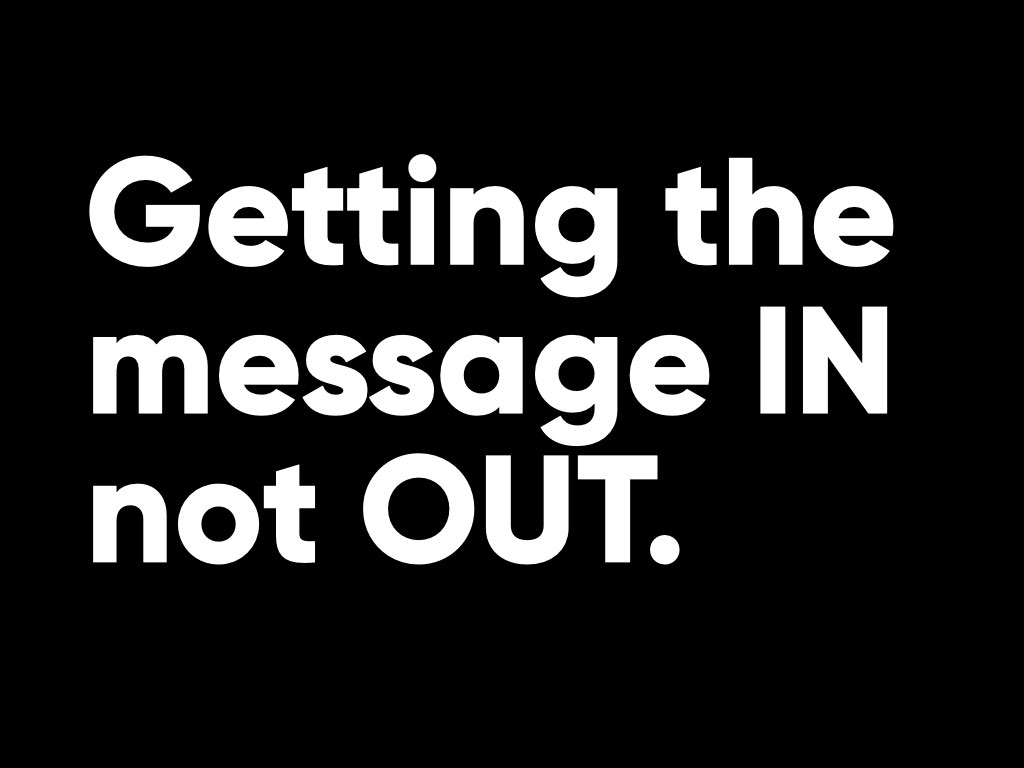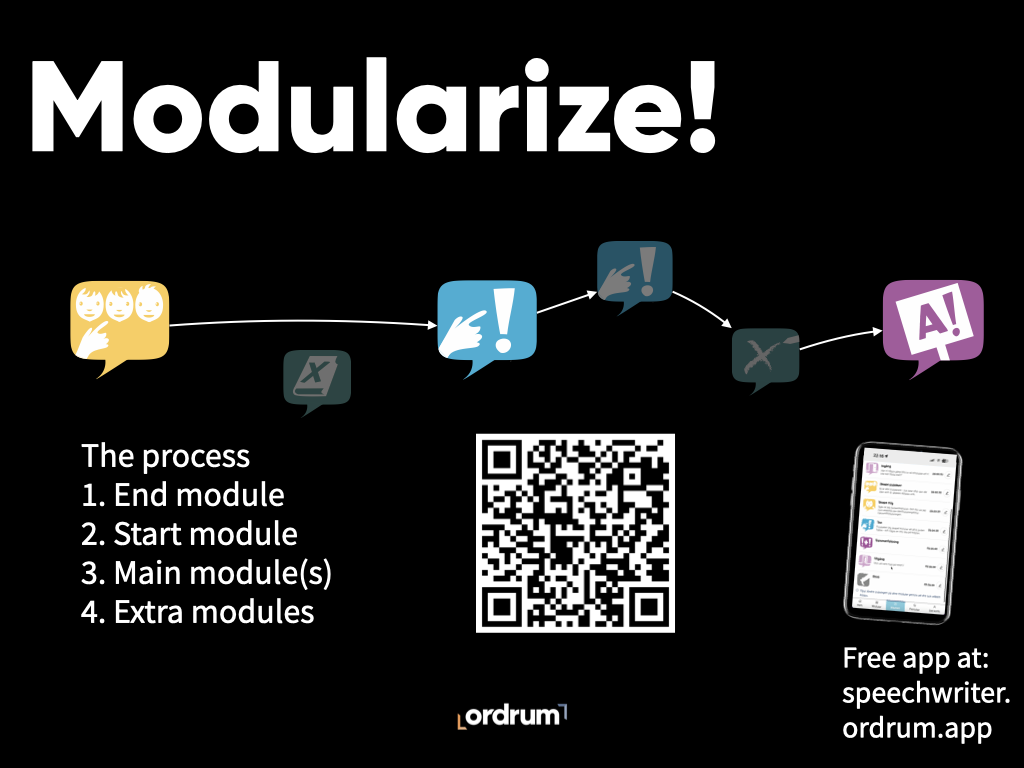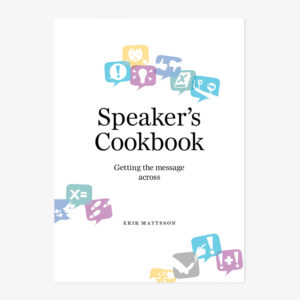Documentation
Below you’ll find a documentation from the seminar. If there are things you don’t recognize consider them a gift.
Hope to see you again!
Best regards
Erik Mattsson
erik@ordrum.se
Presentation Skills in Short
Communication is a skill
This means that practise makes perfect. Talent is heavily overrated.
We play a number of roles
Each of us play a number of roles, and it is perfectly fine to act differently in different roles. Being yourself usually means playing a role in accordance with expectations. Authenticity, then, is in the eye of the beholder.
Body language lies
Body language speaks strongly, especially our eyes, but it does not always reflect our emotions. This means that having the "right attitude" is no guarantee for it to show. This also means that nervousness does not always show.
Getting the message in - not out
Presentation skill is the art of getting your message across. In doing this you'll need to take the following into account.
The Audience
It's all about the audience. Make sure that you design the talk for the audience. The more we know about them, the easier it is to adapt your content so that it gets through to them.
The Speaker
You need to know what the audience knows about you. Then you have two options: be what they want you to be, or be different. Sometimes you only have the latter option. If you are not who they want you to be it is smart to mention that you are aware or this.
The Talk
Decide what you want the listeners to know (the facts), feel (the feelings) and do (the actions). When designing your talk make sure that you talk focuses on this.
Choose main message
Decide what you want the listeners to know, feel and do.
Create modules
Structure your talk as a series of stand-alone building blocks. Prioritize between the modules.
Practise beforehand
Test your talk on someone. Preferably someone who resembles the audience you are going to address.
Adapt on the fly
When you are delivering your talk dare to add or delete modules to fit the audience and time frame.
Accept the result
Things may turn out slightly different from your plans. This is normal.
Entrance
Find a position from where you can be seen and heard clearly.
Greeting
Welcome your listeners.
Create the audience
Describe your audience in as much detail as you can.
Create me
Introduce yourself by empha- sising something you and your listeners have in common.
Header
Tell the listeners what you are going to say. (The header should make the listeners interested.)
Header
Wrap-up. Summarise, conclude, invite or describe the next step.
Create me
Give some personal reflections,and mention lessons you have learned.
Create the audience
Tell the audience what you hope they are taking with them. Connect your talk to their everyday life of your audience.
Farewell
Say goodbye and thank you.
Exit
Move out of the spotlight.
There are many different tools for making a presentation more effective. Below are some of our favorites.
Use whiteboard...
- for describing a process.
- when it is important that all steps are visible throughout your talk.
- to add a feeling of authenticity.
Use flip-chart..
- for key-words.
- for quick drawings.
- to add a feeling of authenticity.
Think of this when using slides:
- Your slides are your scenery.
- Strive for one message per slide.
- Highlight by zooming in, changing colors, using arrows or circles (avoid the pointer).
- Use the B-button now and then (to make the screen go black and give you focus).
- Use dual screen mode (to give you control, and to make it easy skipping or adding slides).
Stories are fantastic. The best stories are stories based on your own experience. The most important thing of all is that stories speak to our emotions, our gut instinct. A well-told story makes us almost experience the situation as we are told about it. We feel the emotions ourselves; we see the people in front of us, hear them talk, see the colors, and imagine the scents. A story adds life and movement and creates pictures in the minds of the people listening to it.
One simple way of creating a story is by using the following three ingredients:
- Moment
- Details
- Emoment (there is no such word yet, I know!)
Retell a moment, preferably from your own life. Give a detailed description. Mention what you did and how you felt. Good stories often include a conflict of some kind.
A rhetorical question is a question you are asking your audience without expecting an answer. The question is more of food for thought. Rhetorical questions can be used to connect to the audience and make them reflect. After the question make a short break and then either give your reply to it, or just move on.
Knowing how others perceive us is key
If we want to improve as communicators. We need to ask for feedback. Always be clear with what role you want feedback on.
Use positive instruction
When you are training, positive instruction – “Do this...” – is more effective than negative instruction “Do not do that...”.


